Lavandula spp.
An herb with many uses, sweetly perfumed lavender is an easy-care plant that makes a gorgeous addition throughout the garden.
A durable and reliable performer in beds, borders, and containers, the color and heady fragrance is simply fantastic when planted in drifts or used in a low barrier or informal hedge.
And it’s a must-have in a variety of themed gardens as well such as butterfly, cottage, cutting, and rock gardens.
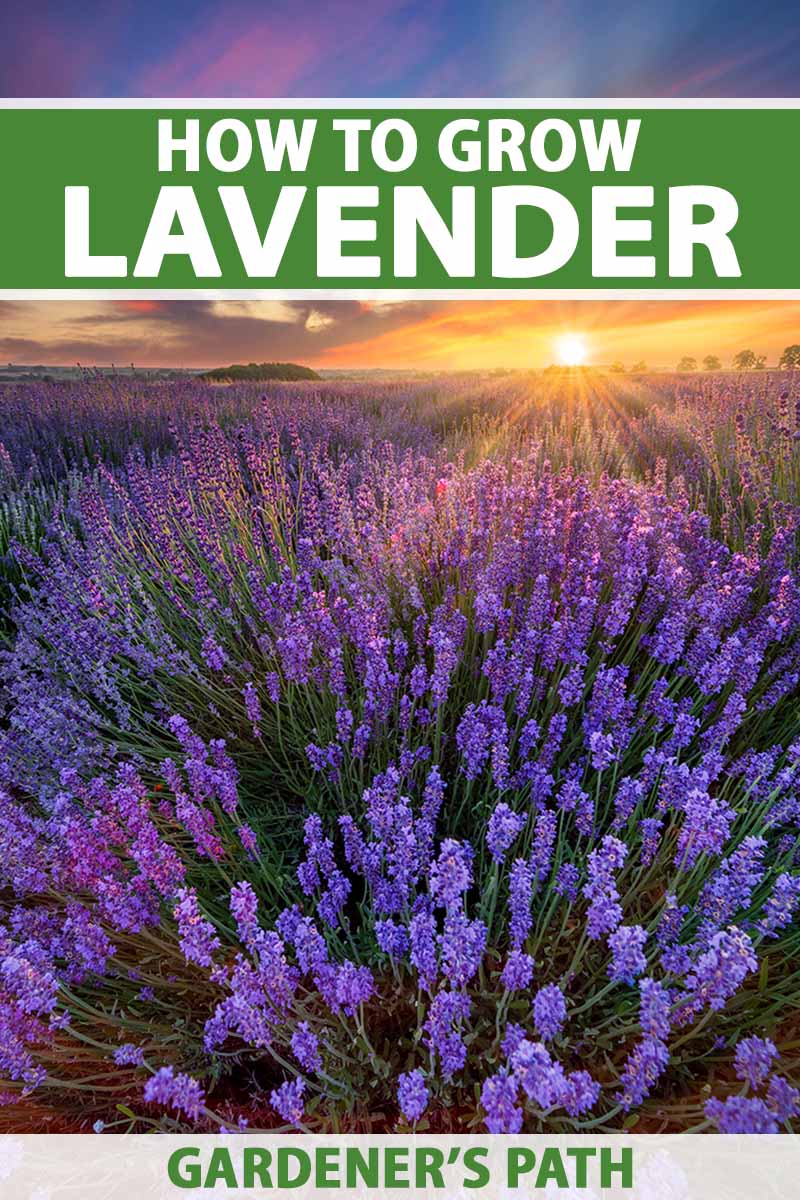
We link to vendors to help you find relevant products. If you buy from one of our links, we may earn a commission.
The shrubby plants feature needle-like leaves of silvery-green and upright flower spikes in shades of mauve, pink, purple, and white that flower at different times over summer, depending on the type.
Common garden varieties include the familiar and beautiful English, French, and Spanish species and the popular lavandin hybrids.
Highly attractive to important pollinators like bees, butterflies, and hummingbirds, the strong essential oils also repel deer and rodents.
A fragrant addition to floral arrangements, potpourri, and sachets, the flavorful leaves and flowers are also used for culinary purposes and have a host of applications in aromatherapy and traditional wellness practices.
Easy to cultivate, these robust plants are drought tolerant, grow in lean soils, and require little annual maintenance. Plus, they offer fair to good cold resistance as well, with a few varieties suitable for USDA Hardiness Zone 4 winters.
And contrary to the belief they won’t grow in regions with high humidity, there are plenty of beautiful options suitable for sticky heat.
Easily grown, sweetly scented, and with beautiful colors, are you ready to try these low maintenance herbs in your garden? Then sit back, relax, and read on for all the details on how to grow and care for lavender!
Here’s everything we’ll cover:
What You’ll Learn
What Is Lavender?
Lavender plants belong to the Lavandula genus and the mint family, Lamiaceae, with just under 50 species and numerous cultivars.
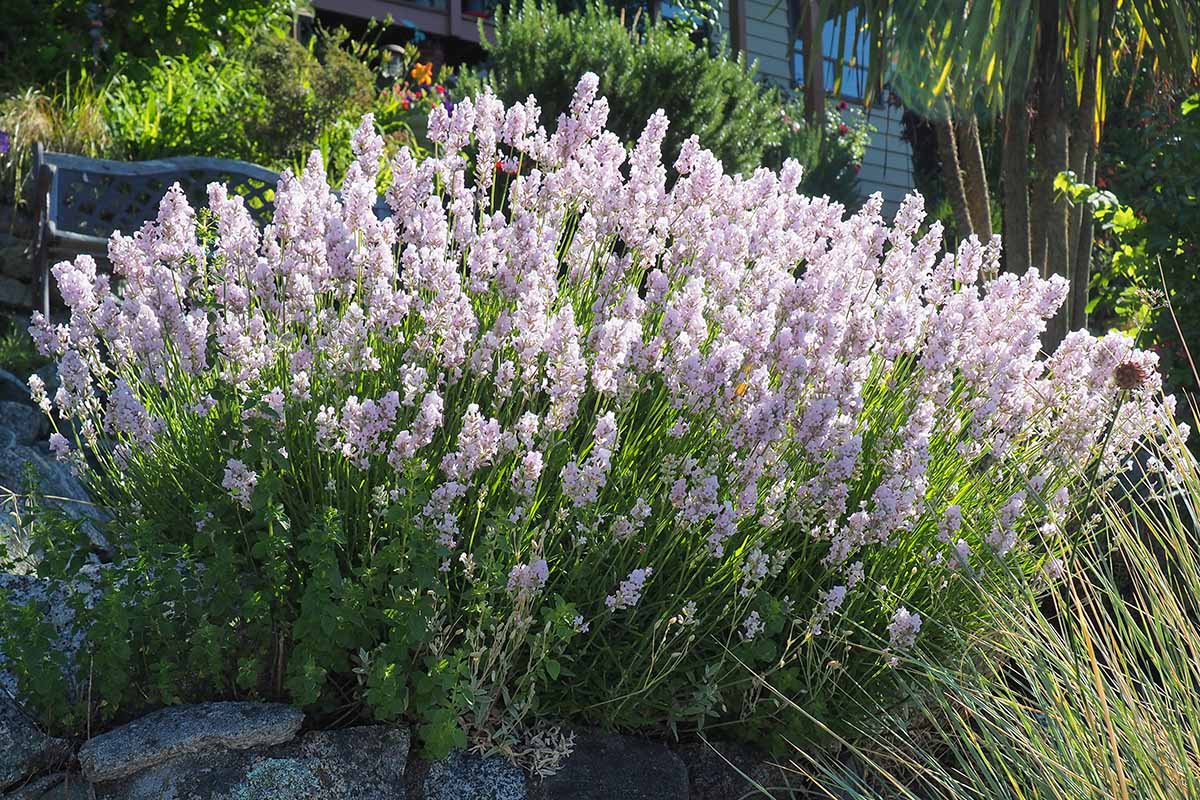
Shrubby perennials, they’re native to mountainous regions and rocky slopes of the Mediterranean basin, including northern Africa, southern Europe, and the Levant.
The popular garden varieties grow to a height of two to three feet and reach maturity in three years. They feature foliage that’s narrow and needle-like or lightly toothed in shades of cool, silvery green.
Starting in early summer, tall upright spikes hold whorls of flowers, with a few species featuring small, flag-like bracts at the tip of the inflorescence. Flower colors include strong shades of blue, mauve, blush pink, purple, purple-black, violet, and white.
A popular ornamental in numerous garden settings, lavender’s leaves and flowers are rich in essential oils, producing a deep and sweetly herbal fragrance.
For the home garden, the following types are most often cultivated:
L. angustifolia is the familiar English species that blooms in late spring to midsummer, best suited to low-humidity climates.
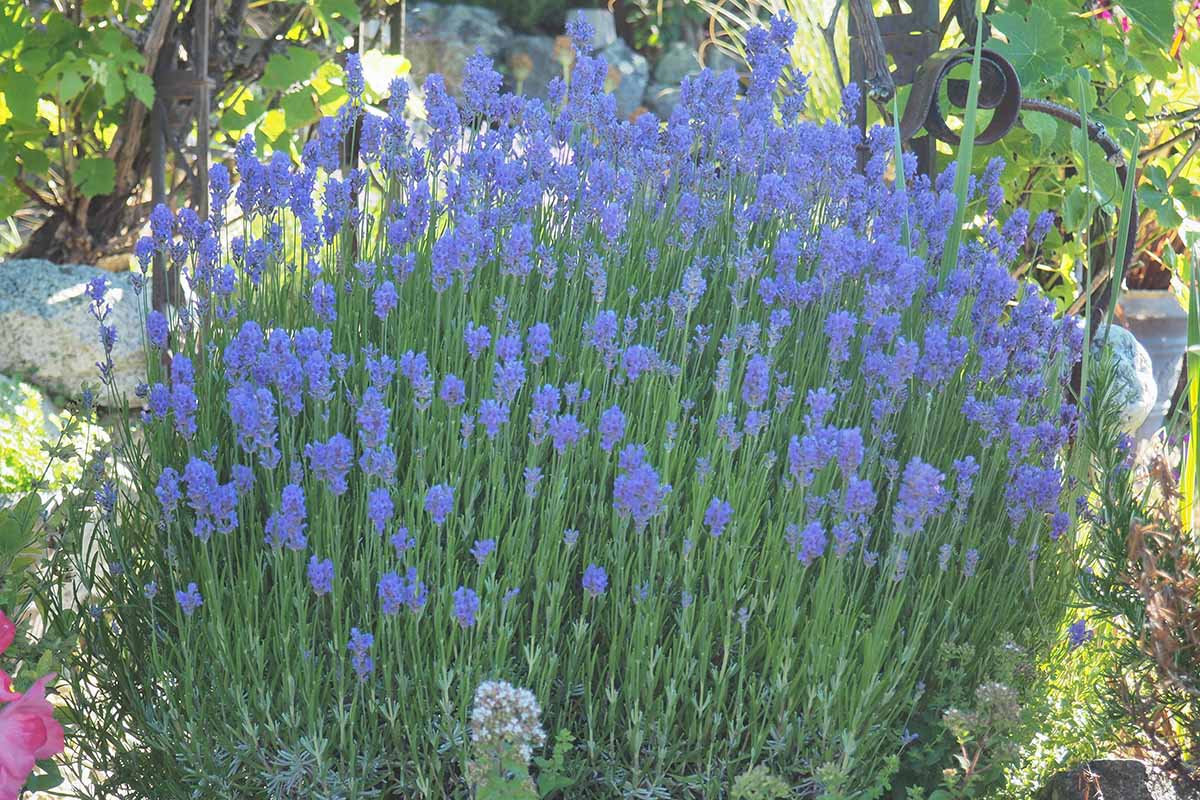
These highly fragrant plants flower in shades of mauve, pink, purple, and white. They’re hardy in Zones 5 to 10, with a few cultivars like ‘Hidcote’ and ‘Munstead’ that are reliable down to Zone 4.
L. dentata is known as French lavender and has charming, flag-tipped inflorescences in shades of mauve and purple that flower in mid- to late summer.
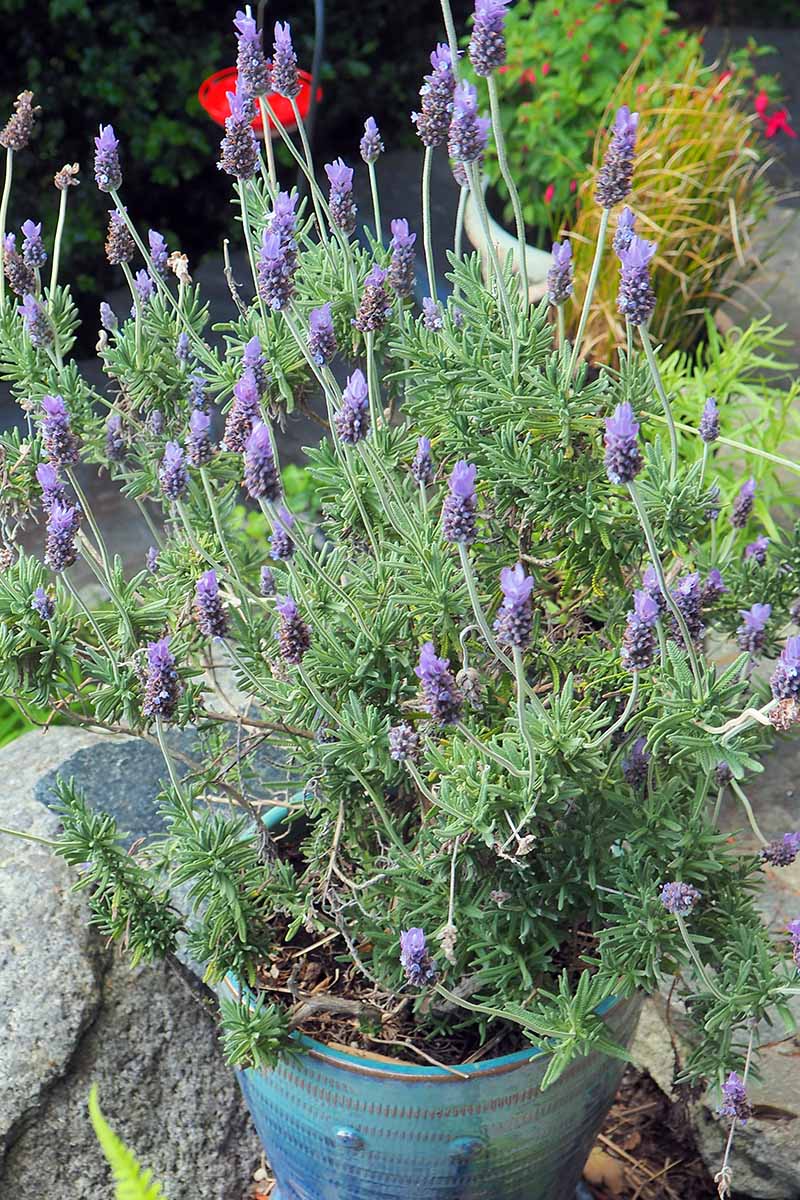
French lavender has a deep, camphor-tinged fragrance and fares well in hot and humid climates. Hardy only in Zones 8 to 10, plants require protection from hard frosts.
L. stoechas is the Spanish species, with distinctive flag-tipped, pineapple-shaped flowers in deep shades of rosy pink, magenta, and royal purple.
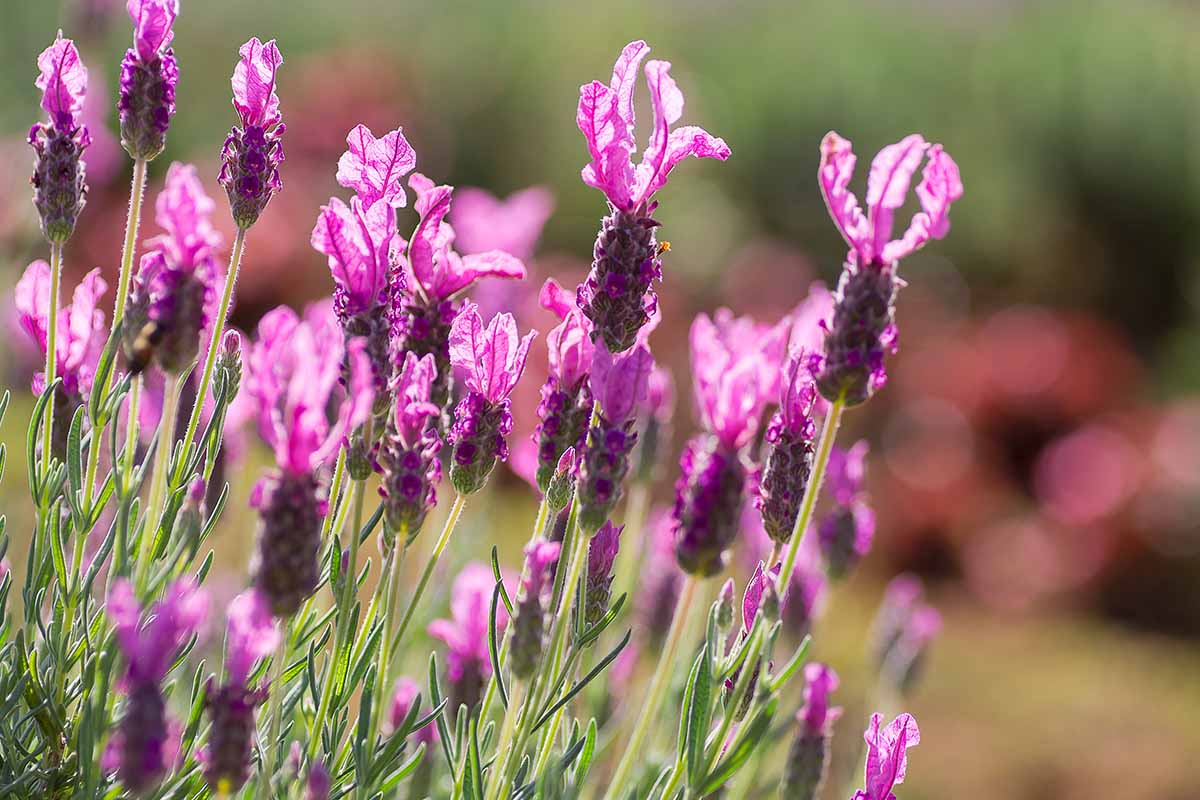
Plants are lightly fragrant with notes of eucalyptus. They flower in late spring with a lighter midsummer rebloom if deadheaded. Frost-tender plants, these are the most tolerant of heat and humidity and they’re hardy in Zones 8 to 11.
L. x intermedia hybrids are called lavandins, a cross of L. angustifolia and L. latifolia. These are highly fragrant, long-stemmed flowers in shades of royal blue, mauve, purple, and white that flower in midsummer.
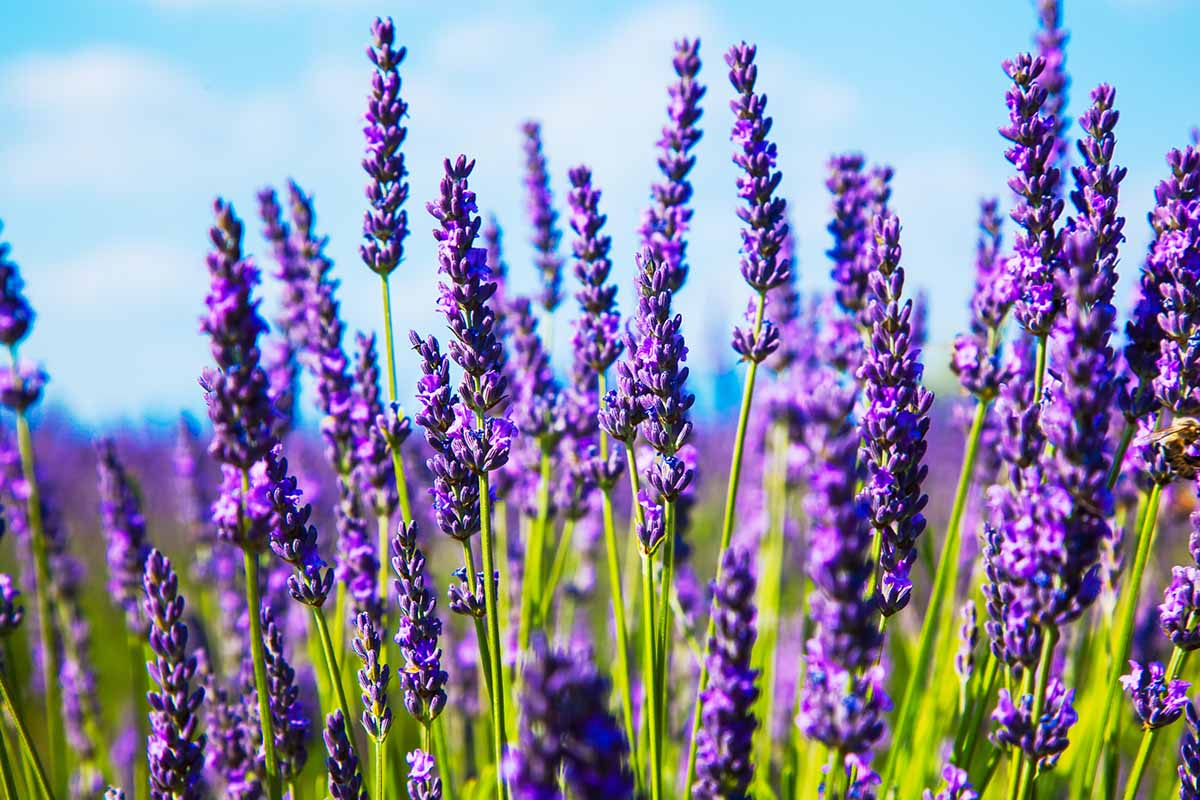
Lavandins are the fastest growing, and form large, handsome mounds that retain their good looks over winter.
They also have improved disease resistance, perform well in humid settings, and are cold tolerant. These plants are typically hardy in Zones 5 to 10, with cultivars like ‘Phenomenal’ that are hardy to Zone 4.
Lavenders are tough and durable plants with good drought resistance when established.
Requiring little fertilizer, they do well in a variety of soils and require little care or attention aside from annual pruning and winter mulching.
Cultivation and History
A glorious ornamental, lavender has long been used as a culinary plant and herbal medicinal, and in perfumes and toiletries.
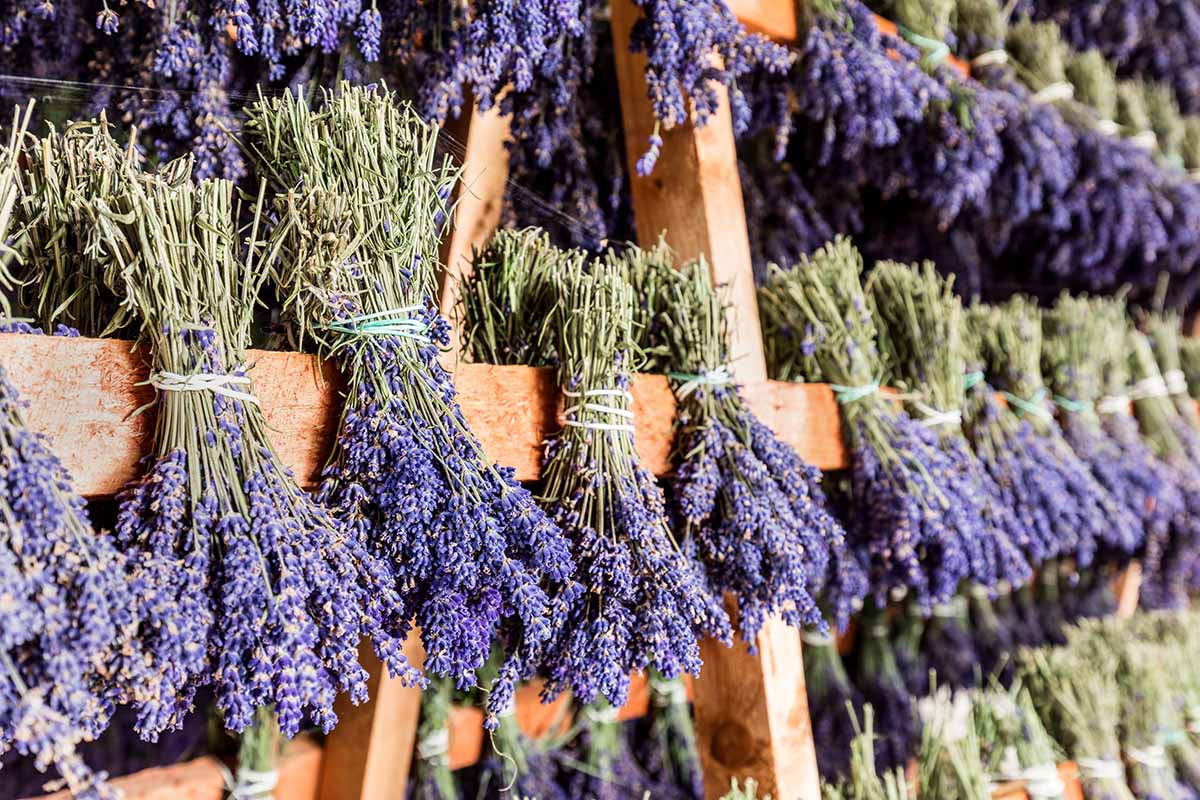
In the Bible, lavender (called nard or spikenard) is mentioned in both the Old and New Testaments, including the Song of Solomon and the Gospel of John.
And in the ancient world, the Greeks, Egyptians, Persians, and Romans used it as a disinfectant, flavoring, medicinal, and perfume.
It’s thought that it came to Britain with Roman soldiers who used it in their baths and for its healing properties. The name “lavender” comes from the Latin word “lavare,” which means “to wash.”
During the Black Plague, bundles of lavender were burnt for the purifying smoke and European physicians used its essential oils on their gloves and in masks to ward off infection.
Lavender made its way to North America with early European settlers.
Today it is still used in aromatherapy and alternative medicines for its many purported health benefits, including anti-inflammatory, antimicrobial, and antiviral properties as well as the treatment of disorders such as anxiety, digestive problems, and insomnia.
Propagation
Propagation of lavender is achieved by sowing seed or rooting stem cuttings.
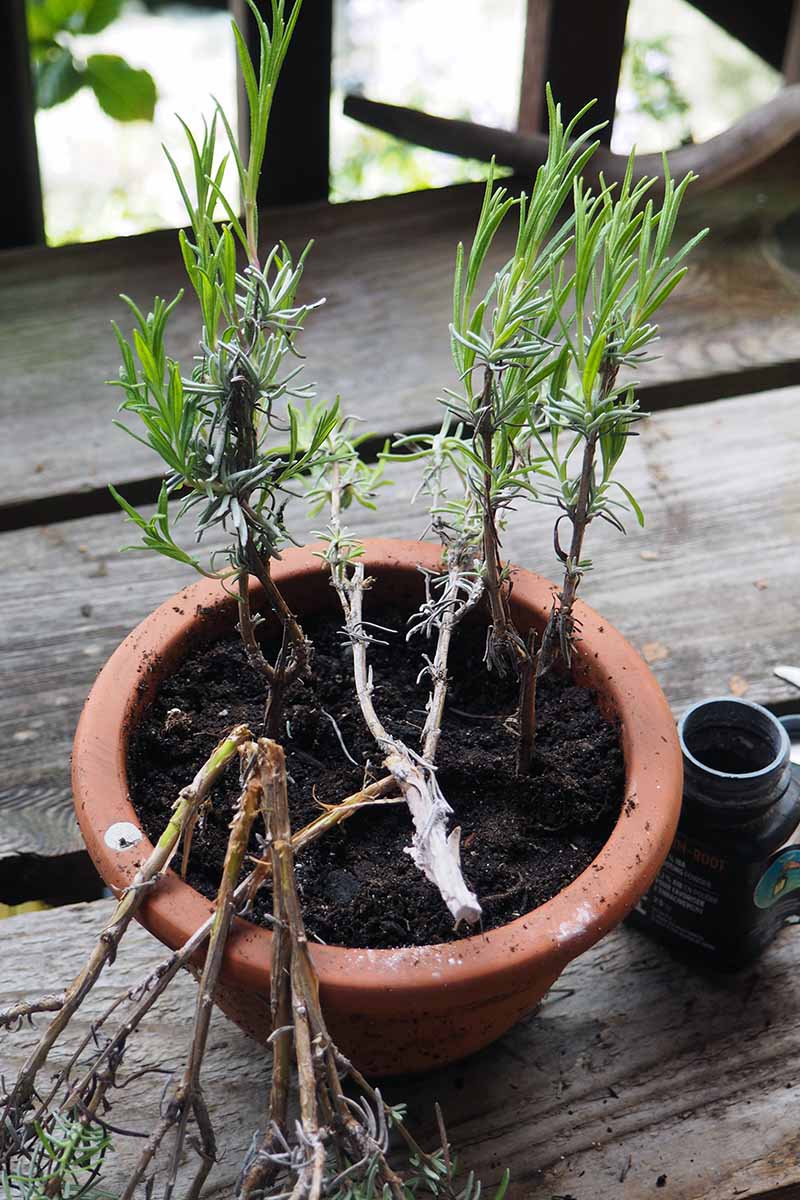
Seeds should be started indoors eight to 10 weeks before the last frost date for your region.
Fill flats with a moist, sterilized starter soil and sow seeds over the surface, covering lightly with one-eighth of an inch of soil.
Cover the flats with a greenhouse dome and place in a sunny window or under grow lights.
When seedlings are three to four inches tall, transplant into individual four- to six-inch pots.
After all danger of frost has passed and overnight temperatures are consistently above 50°F, harden off plants for a week with a few hours spent outdoors every day, gradually increasing until they can spend a full day outdoors, then transplant into large containers or garden beds.
Seeds should germinate in 14 to 21 days at temperatures of 65 to 70°F, but they can take up to 90 days. A heat mat and grow lights can be useful to encourage germination.
Hardwood stems are the best for taking stem cuttings and can be started any time from spring to autumn.
For all the details on this propagation method, refer to our guide on how to grow lavender from cuttings.
How to Grow
Lavender requires a full sun location in well-draining soil with a neutral to slightly alkaline pH of 6.5 to 8.0.
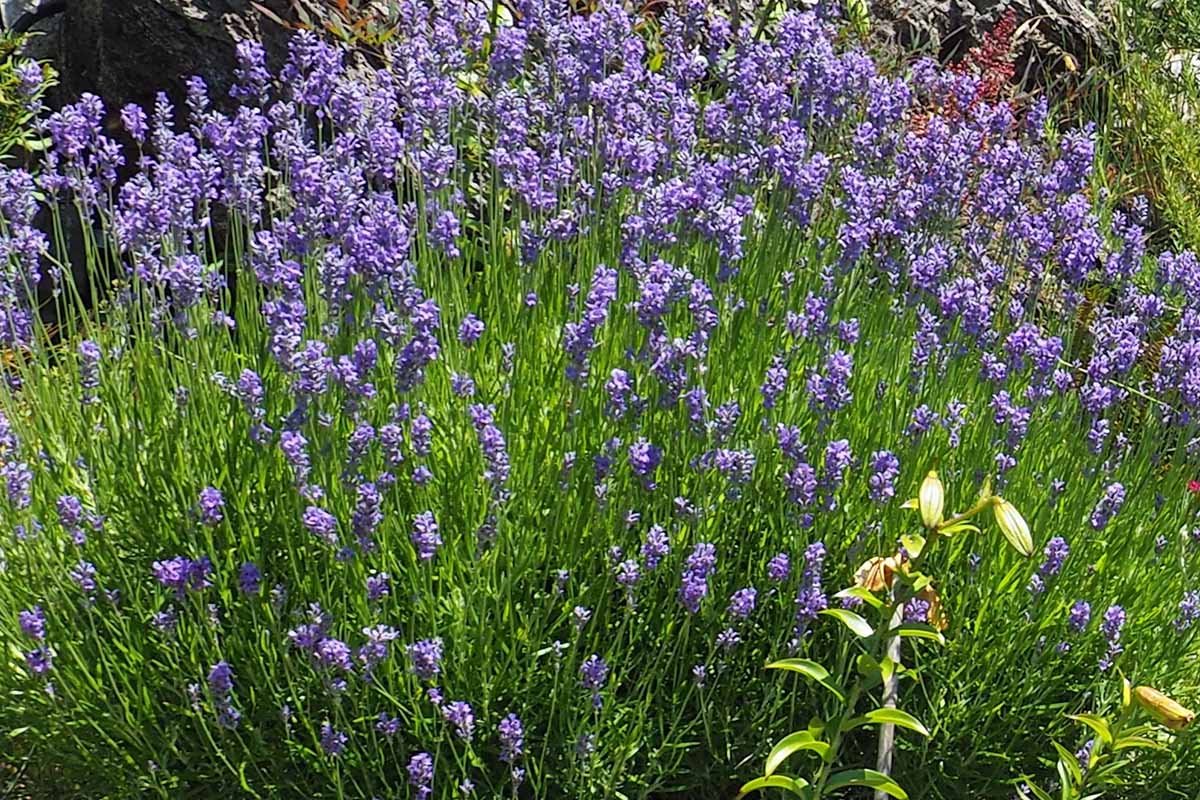
Plant into containers or garden beds in spring, once overnight temperatures remain above 50°F.
Lavender can also be planted in fall, but select only larger plants with a robust root system that can withstand freezing temperatures.
These stout plants do well in a range of soils from lean to fertile, but perform better – with faster, more uniform growth and more flowers – in enriched soil.
Prepare the planting site by mixing in a shovelful or two of aged compost or well-rotted manure.
Add the same amount of landscape sand or pea gravel to improve drainage – lavender does not do well in overly wet soil or standing water.
Mix in some bone meal for healthy root growth. And if your soil is on the acidic side, mix in one-half cup of garden lime to sweeten the soil.
Set plants in place and plant shallowly, placing the crown just below the soil line and spacing 12 to 18 inches apart. Spacing is important for proper air circulation, particularly in areas with high humidity.
Firm the soil lightly around the roots and water gently.
A two-inch mulch of pea gravel is effective in summer to keep weeds at bay, and in winter provides insulation for the roots without trapping moisture. Keep the gravel one to two inches away from the stems to avoid crown and root rot.
Until plants are well-established, water regularly with up to one inch per week, allowing the top inch of soil to dry out between waterings.
Mature plants are reliably drought resistant, but for an abundance of flowers, water deeply every two to three weeks until flower buds form. After bud set, water weekly until flower harvest, then reduce watering again to every two to four weeks for the remainder of summer.
Lavender is also well-suited for container growth.
Use containers with adequate drainage holes. I like to add a layer of drainage materials such as pebbles or broken pottery before planting.
Fill containers with the same soil mix as described above and plant with the crowns just below the surface.
Place in a location with full sun and water when the top inch of soil is dry.
Growing Tips
Wonderfully low maintenance, the following tips can help ensure robust growth and profuse flowers.
- Lavender can’t abide wet conditions or standing water and must have well-draining soil. Improve soil drainage by mixing landscape sand or pea gravel into the planting site.
- In regions with high heat and humidity, choose the varieties best suited for these conditions such as the French (L. dentata) and Spanish (L. stoechas) types or the lavandin hybrids.
- If a winter mulch is needed for cold protection, choose a porous material that doesn’t trap excess moisture, such as pea gravel.
- Prune plants annually after flowering to maintain a tidy form and prevent leggy stems.
- For the most intense fragrance, avoid over-fertilizing and over-watering.
If you’d like to use your lavender for purposes outside the garden, knowing when and how to harvest flowers is important too.
Harvesting
A delightful herb in compound butters, conserves, and jams or dried for herbal remedies, potpourri, or sachets, flowers should be collected when their essential oils are at their most intense.
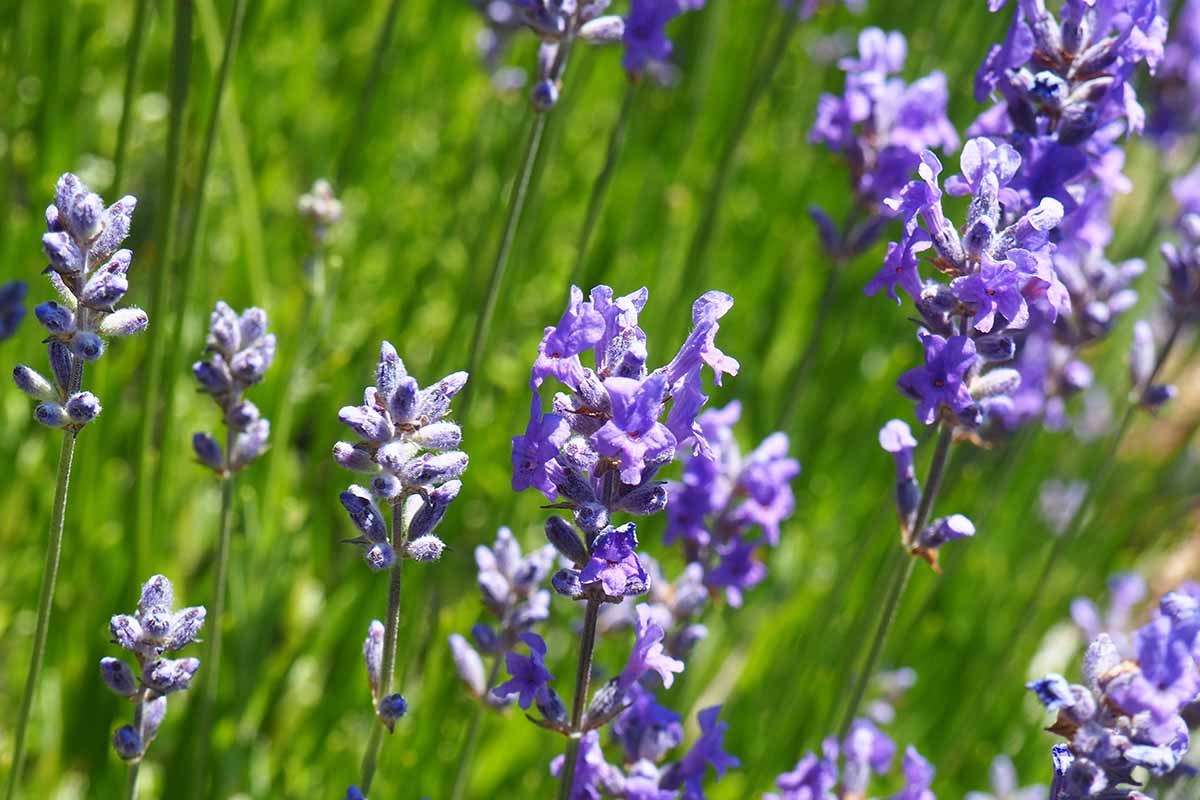
When about half the flowers on the stems are open, harvest in the morning after the dew has dried – this is when oils are at their peak and not yet dispersed by hot sunshine.
Grab a small handful of stems and cut so they are as long as possible, snipping just above the foliage. Use clean, sterile scissors or garden snips.
Gather stems into small bundles and secure with an elastic band or twine.
Hang the bundles in a cool, dark, and dry location with ample air circulation. Flowers will dry in three to four weeks.
When dry, shake or strip flowers from stems and store in a glass jar with a tight-fitting lid.
Pruning and Maintenance
Annual pruning is important because it slows down woody stem growth and forces plants to produce new foliage, maintaining a dense, mounded form.
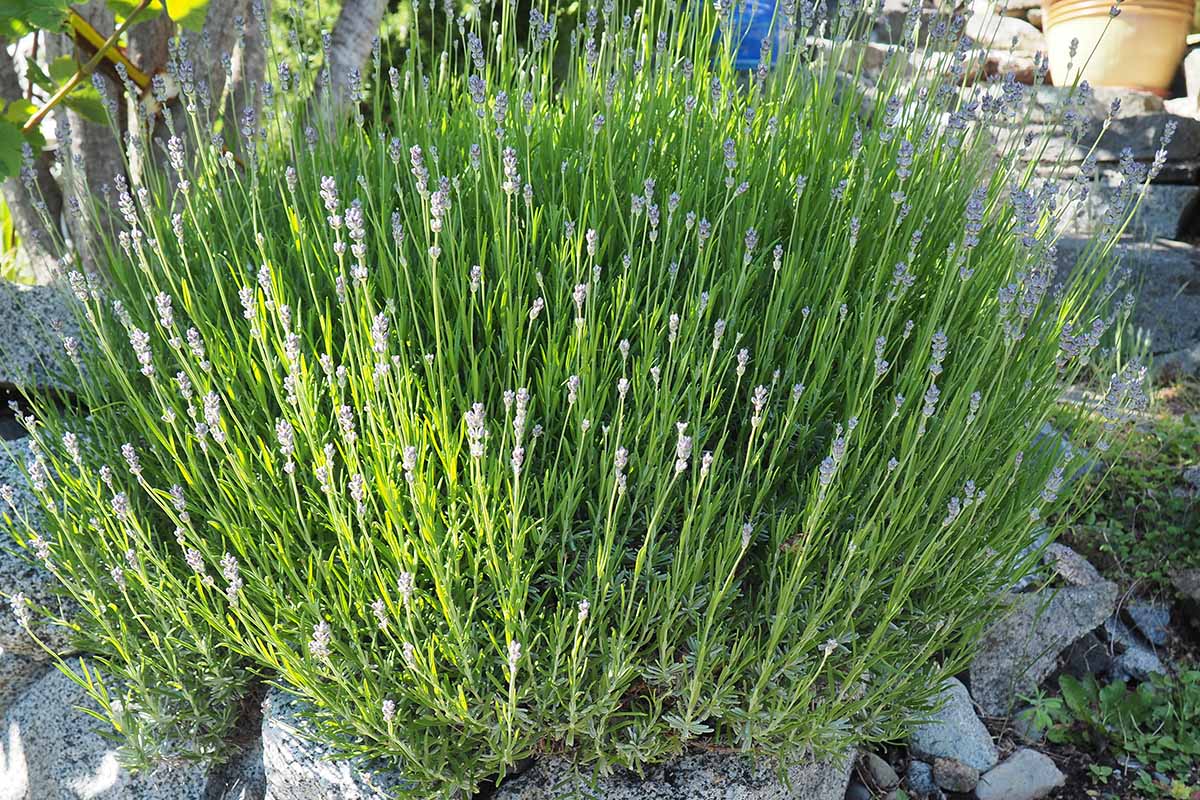
But deciding when to prune depends on your winter weather.
In areas with mild winters, pruning can be done after flowering or in autumn, reducing plants by approximately one-third.
In areas with cold winters, autumn pruning should always be avoided. Fresh wounds on stems and the tender new growth that pruning prompts leave plants susceptible to damage or die-off in freezing temperatures.
Instead, prune in late winter just as new growth starts to emerge, reducing plants by up to a third. If you don’t wish to harvest the flowers, prune lightly after flowering, removing flower stems and an inch or two of foliage to tidy plants.
For mature plants with woody stems, after flowering, prune lightly throughout the growing season to encourage more foliage.
To successfully reshape overgrown plants with long, woody stems, our guide on how to prune lavender has all the rejuvenating details.
Lavender requires little in the way of fertilizer and produces more oils – and fragrance – in lean, moderately dry conditions.
To feed plants, top-dress in early spring with a two-inch layer of compost or aged manure spread over the root zone. Create a two-inch, compost-free collar around the stem to avoid stem and crown rot.
That’s all the fertilizer garden plants require, but container plants benefit from an application of a balanced 10-10-10 (NPK) fertilizer after flowering.
Provide plants with winter protection as needed.
Mulch with a two- to four-inch layer of pea gravel to protect roots.
If needed in very cold conditions or drying winter winds, protect plants with a cover of burlap, floating row covers, pine boughs, or straw. Remove covers in late winter.
Mulch container plants, then tuck into a sheltered spot and cover if needed.
In very cold conditions, move containers into an unheated garage or shed but don’t allow the soil to dry out completely. Plants are dormant in winter but still require a small sip of water about once every month to stay viable.
Containers can also be brought indoors in winter, but because they’re dormant, they must be placed in a cool room with temperatures of 45 to 60°F.
Place in a location with bright, indirect light and water lightly – but don’t expect much in the way of growth while plants are dormant.
Move outdoors once warmer temperatures return.
Species, Hybrids, and Cultivars to Select
There’s a great variety of species and hybrids available online and in garden centers. Here’s a small selection of recommended varieties to get started.
French
French lavender, L. dentata, also called fringed lavender, has a sweet herbal fragrance with notes of cleansing camphor. These develop attractive, deep purple flowers tipped with rosy-mauve flags and feature lovely toothed foliage in silvery sage green.
Flowering from July through August, plants have an upright growth habit and reach a height of two to three feet.
An eye-catching – and nose-catching! – plant for courtyards, foundations, pathways, and patios, the French variety also makes a dramatic addition to tall urns.
A good choice for areas with heat and humidity, these plants are hardy in Zones 5 to 9.
Container plants are available at Nature Hills Nursery.
Munstead
A beautiful L. angustifolia hybrid, ‘Munstead’ is a compact plant with intensely fragrant lilac-blue flowers and narrow, gray-green leaves.
Flowering in late spring and early summer, these pretty and durable English-variety plants are sensational as low barriers or in beds, borders, and containers, as well as in butterfly, cottage, cutting, knot, and rock gardens.
Plants grow 18 to 24 inches tall with a similar width and are hardy in Zones 4 to 9.
Container plants are available at Burpee.
Phenomenal
A lavandin hybrid, ‘Phenomenal’ (aka ‘Niko’) is highly aromatic with impressively long flowers on tall stems that are perfect for cutting. The flowers are a deep purple-blue, and the needle-like foliage is medium green with gray undersides.
This cultivar makes a beautiful and fragrant focal point in beds, containers, and foundations, or use it to add pops of color throughout city, courtyard, and cottage gardens.
Flowering in early to midsummer, this cultivar produces bushy, upright growth of 24 to 36 inches.
These plants have good cold, heat, and humidity tolerance, and they’re hardy in Zones 5 to 9.
Container plants are available at Planting Tree.
Sensational
Very unique, ‘Sensational’ (aka ‘Tesseract’) is a cross between the English and Portuguese (L. latifolia) species, with big, bold flowers of deep purple and distinctively broad, silver leaves.
Sweetly fragrant, the upright, mounding growth is impressive in beds, borders, and foundations or potted up on balconies and terraces. It flowers abundantly in early summer and reblooms lightly through late summer with deadheading.
‘Sensational’ plants reach a height of 24 to 30 inches and are hardy in Zones 5 to 9.
You can find container plants at Nature Hills Nursery.
Spanish
Spanish lavender is noted for its fragrant and plump flowers of deep magenta or royal purple tipped with lilac flags, and silvery, sage green foliage.
The compact, mounding plants grow 18 to 36 inches tall and flower prolifically in late spring and early summer. They will rebloom lightly throughout summer after deadheading.
This species makes an excellent choice as a low barrier or massed in beds, borders, and containers, or it’s lovely featured in butterfly, cottage, and rock gardens.
Well suited for areas with high heat and humidity, these plants are hardy in Zones 7 to 9.
Container plants can be purchased at Home Depot.
Want More Options?
Be sure to check out our 11 of the Best Lavender Varieties for Hot Climates or 11 of the Best Cold-Hardy Lavender Varieties for Cooler Climates depending on your growing needs.
Managing Pests and Disease
Lavender is typically easily cultivated and hardy, but there are a few issues to watch for.
Aphids are sapsuckers that can collect on stems. They don’t usually cause fatal damage, but they may spread mosaic virus, which is fatal.
Remove aphids with a strong spray of water from your garden hose.
Spittlebugs also like lavender, and while unattractive, they don’t cause a lot of damage. Remove spittlebugs with a good blast of water from the hose.
Whiteflies are also sapsuckers. Extensive damage from whiteflies is rare but they are annoying pests and hard to get rid of.
Use a natural control method like encouraging or releasing ladybugs or spray plants with neem oil to control whiteflies.
Alfalfa mosaic virus is spread by insects like aphids and causes yellow, curled leaves. Infected plants must be removed and destroyed.
Soilborne fungal infections like crown and root rot can cause plant collapse.
To avoid root and crown rot, don’t overwater, plant in a full sun location, ensure adequate air circulation, and keep organic mulches away from the stem and crown area.
Quick Reference Growing Guide
| Plant Type: | Woody flowering subshrub | Flower / Foliage Color: | Blue, magenta, mauve, pink, purple, white; silvery sage green |
| Native to: | Southern Europe, northern Africa, and the Levant | Maintenance: | Low |
| Hardiness (USDA Zone): | 4-11, depending on variety | Tolerance: | Deer |
| Season: | Summer | Soil Type: | Lean to fertile |
| Exposure: | Full sun | Soil pH: | 6.5-8.0 |
| Spacing: | 18-24 inches | Soil Drainage: | Well-draining |
| Planting Depth: | Crowns just below soil surface (transplants) | Attracts: | Bees, butterflies, hummingbirds |
| Height: | 12-36 inches | Uses: | Low barriers; beds; borders; containers; butterfly, cottage, cutting, courtyard, fragrance, and rock gardens |
| Spread: | 18-40 inches | Order: | Lamiales |
| Time to Maturity: | 2-3 years | Family: | Lamiaceae |
| Water Needs: | Low | Genus: | Lavandula |
| Common Pests and Diseases: | Aphids, spittlebugs, whiteflies; mosaic virus, crown and root rot | Species: | Angustifolia, dentata, latifolia, stoechas, lavandin hybrids |
Your Turn to Grow!
Lavender is beautiful, low-maintenance, and easy to grow when you know how to care for it.
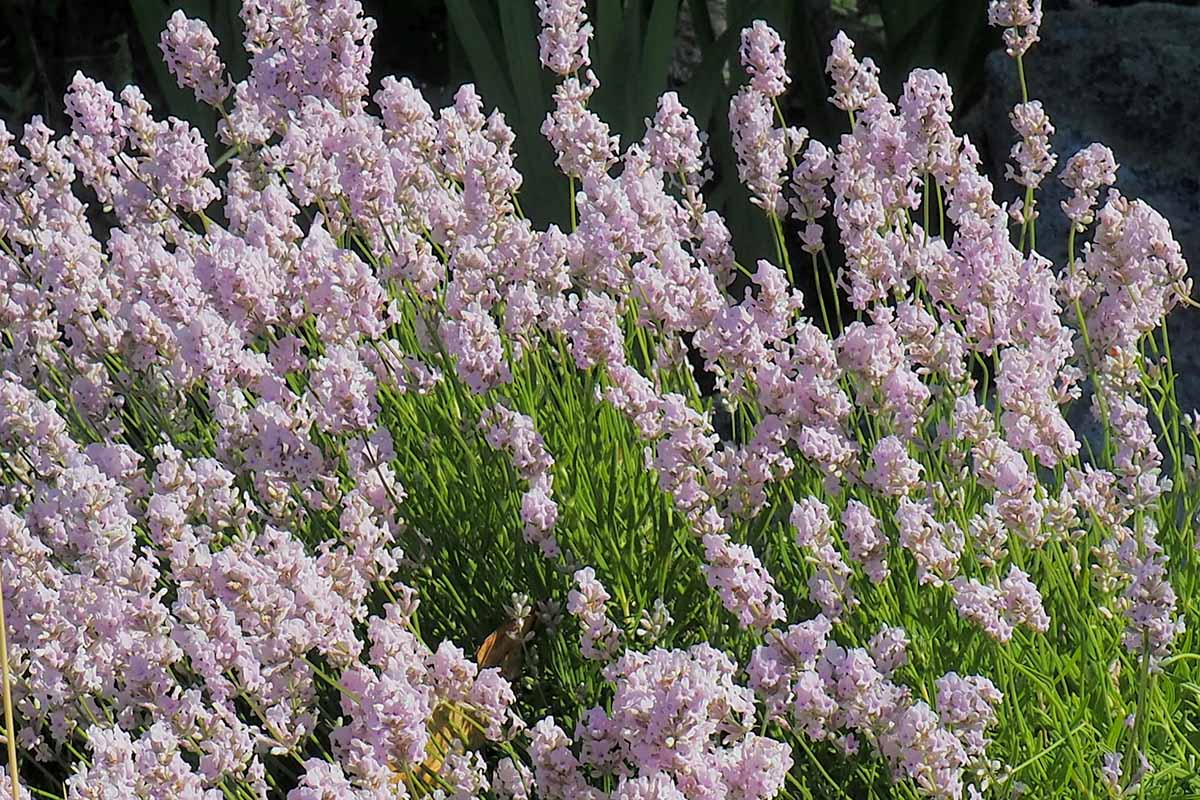
Remember that the French and Spanish types are best for areas with high humidity, the English ones are better suited for cold winters, and the lavandins thrive in pretty much any climate!
Which types of lavender gives you the best success? Tell us about it in the comments section below.
And for more information on herbs for your garden, add these guides to your reading list next:
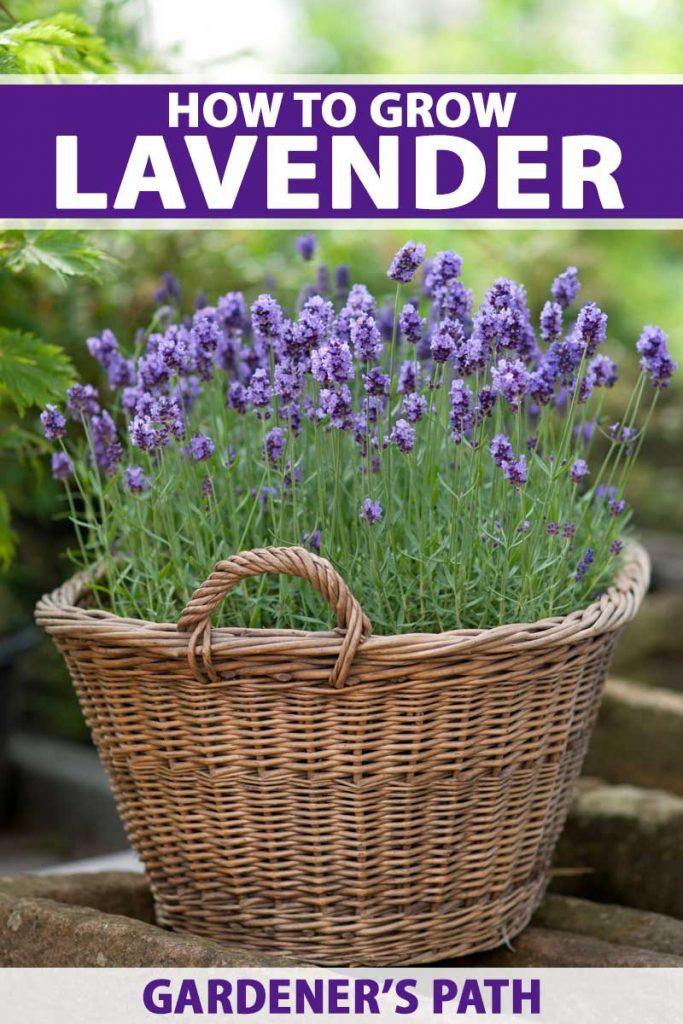
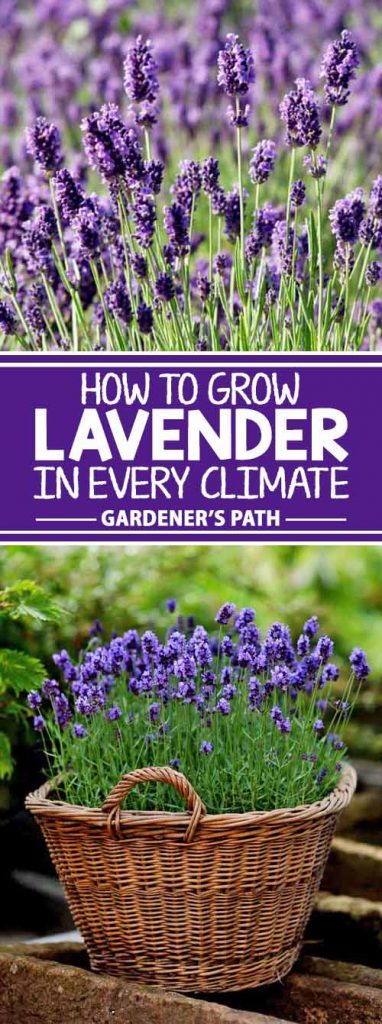
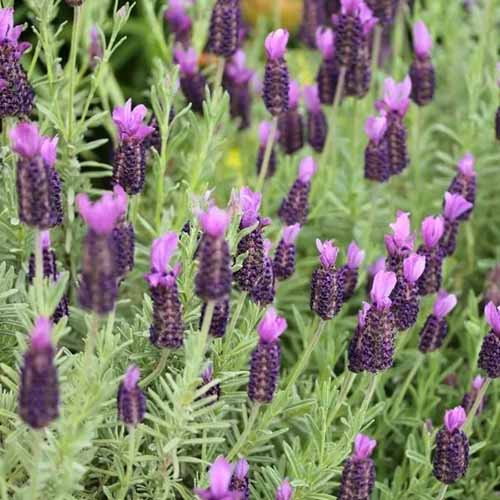
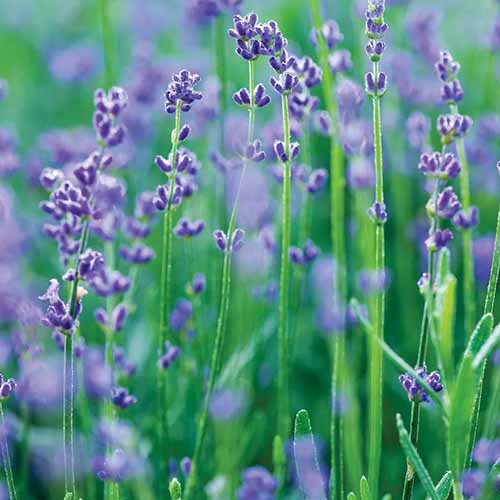
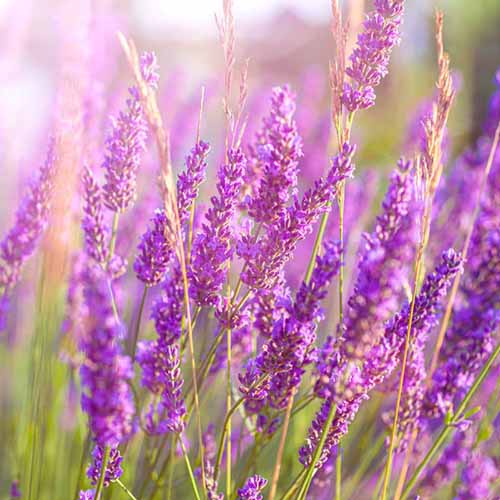
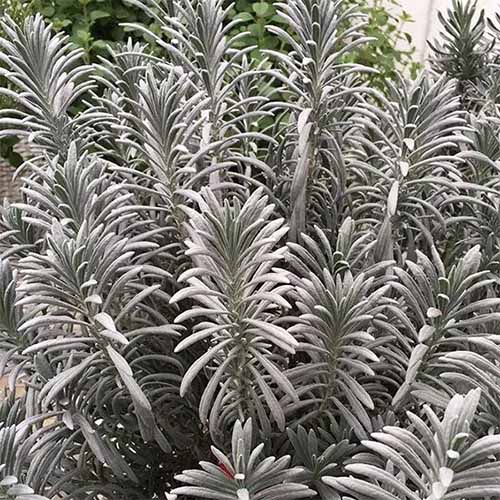
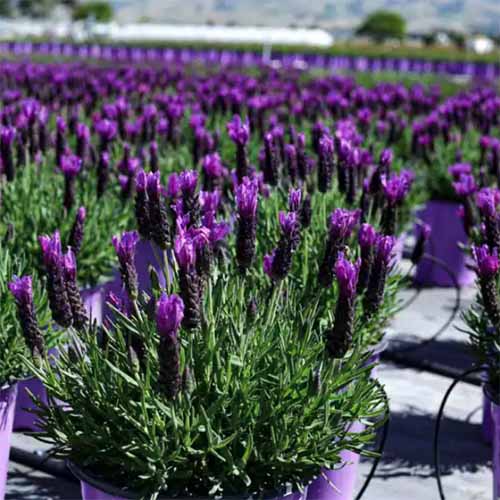
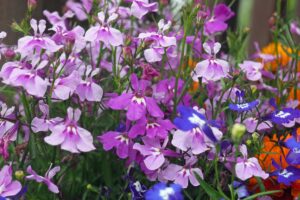
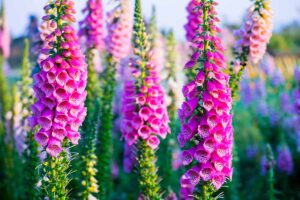
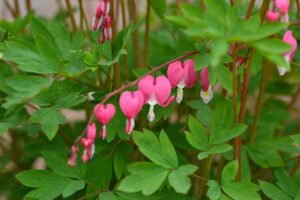
Thank you enjoyed your article
Thanks, Sherrol! We’re glad you enjoyed it and hope you will keep coming back for new articles. 🙂
Thank you. I love this plant but never
tried to grow it in south Florida. I will give it a try to see if I succeed!
Thanks for reading, Marina. Good luck! Let us know how it goes!
Loved the article. I planted some last November and it’s finally starting to bloom! Thanks for the tips so I can hopefully keep them going strong.
Thanks for reading, Justina! That’s great news. We’d love to see pictures – please share on our Facebook page!
Great article! Saw a lavender plant in a small pot with the perennials at a local nursery and bought it. I live in northeast Ohio, so your tips for growing in cold climates hit the spot. I planted it in a large pot with herbs, so now I need to give the plant its own small pot with gravel for drainage and move to a sunnier spot. It’s blooming even though I did everything wrong!
That’s the beauty of hardy herbs Carolyn, even when abused they still perform! Just wait until it settles in its new well-drained, sunny location – you’ll love the results!
Thanks for the great tips about lavender not liking water and loving heat. Mine is growing in a pot, so I’ll watch out for overwatering! Also I didn’t realize it was a perennial!!
Glad you found some tips helpful Maureen!
Wish I had seen your article before I planted my two lavender plants. I watered them literally to death. Had no idea they didn’t like water. ???? Will try again. Thanks. ????
Ouch! One of those hard lessons Pam… good luck with your new plantings!
Thanks for the very optimistic article! I live on an arid and windy South Caribbean island and have tried growing lavender several times. Even though I have not been able to grow it from seed, I have imported several small plants when travelling, with varied results. I tried angustifolias and stoechas with no luck every time (plants wither and dry up), but have had good results with Multifida and with a Croatian variety (which unfortunately, neither can be purchased on the island!). The only problem is that the plants continue to grow but they do not flower. Do you have… Read more »
There are three things you can try for more blooms Marie Anne. The first is to give your plants more sunlight. Eight hours a day is the ideal, with light shade in the hottest part of your Caribbean afternoons. The second is to provide your plants with a 2-inch layer of sand or gravel as a mulch to help retain heat. And the third is to prune your plants in spring as soon as new growth appears, cutting back the stems by about 1/3. Also, you might want to try a diluted amount of an all-purpose purpose fertilizer in the… Read more »
Thanks for your article! Do you know how to determine if Lavender is receiving too much water?
Hi Sandra –
Lavender plants with leaves that are darkening and wilting, and roots that are rotting, may be suffering from too much water. Feel the soil beneath them, and if it’s saturated, the drainage is inadequate. Try incorporating some sand into your garden soil, and be sure that potted plants have enough drainage holes.
Lavender requires very little water. Once established in the garden, you shouldn’t have to water unless there’s a severe drought. Potted plants should dry completely before being watered again.
Good luck with your lavender!